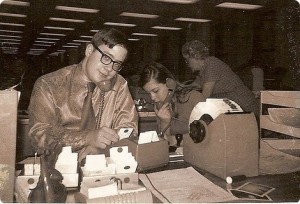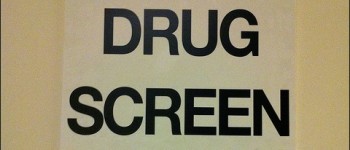Drug Use In The Workplace: How Employers Cope Today
DISCLOSURE: As an Amazon Associate, I earn from qualifying purchases.
The director of call center at a Midwestern insurance company looks across his 4,000 sq foot operation on a hot summer Monday.

“Look at all those empty seats”, he complains. “Looks like another hard-partying summer weekend has left us short-handed.”.
The problem of drug-induced absenteeism doesn’t just affect the supervisor, it also hurts the 90% of the work force who showed up. They have to pick up the slack.
Recruiting qualified workers is becoming more difficult as the recession ends, so the last thing American businesses can afford is to have a portion of its existing work force abusing drugs to the point it impacts their work.
It doesn’t matter whether the drug use happens on or off the job – the impact at work is the issue.
The truth is that most employees don’t do drugs and don’t want to work with drug abusers who come to work high or hung over.
So if you use drugs and go to work high, quit doing that! You’re just being rude – and potentially unsafe.
In addition, employees who are parents are concerned about the effects of drug abuse on their children, now and in the future. They take drug abuse very personally – it is a societal issue for them. If you have kids, you want to protect them. Don’t fight that instinct – you’ll lose every time.
Given the habits of the typical American worker, it is clear that substance-abuse prevention can and should be viewed as a common concern of both employers and employees.
But drug abuse is first and foremost a health problem, not a business or legal issue.
Drug use in the workplace costs the US billions of dollars each year in lost productivity, increased health problems and workplace accidents – to say nothing of the problems it causes at the federal and state level with associated family problems.
Contrary to the typical portrayal of drug abusers, many apparently functional drug and alcohol abusers manage to hold down full or part-time jobs, masking use from their employers.
In fact, over seventy four percent of all current illegal drug and heavy alcohol users hold down some type of job. (Heavy drinkers consume five or more drinks per occasion on five or more days in the 30 days preceding the survey). According to the U.S. Dept of Labor, almost 9 million Americans use some type of illegal substance.
And drug abuse costs money. The cost of illicit drug abuse is estimated to have been $160.7 billion in 2000, with 2/3 of those costs stemming from productivity losses caused by drug-related illness and deaths. Reducing substance abuse positively impacts America’s economic landscape.
Medium-sized businesses apparently bear the largest burden of substance abuse. Traditionally, larger employers participate in drug-free workplace practices. As a result, medium to large employers who do not have drug free workplace policies in place are – in essence – adversely selected against in terms of the employees that are left to hire.
Another thing to note is that substance abusers will steer away from drug-free workplace companies. They will work for those businesses that don’t have a policy or a program and where there is no drug testing involved. Let’s face it, no abuser wants to be detected.
The cost of drug user compensation claims can bury a company.
Drug-using employees are 3 and half times more likely to be involved in workplace accidents and 5 times more likely to file a workers’ compensation claim. Between thirty eight and fifty percent of all workers’ compensation claims are related to substance abuse, according to the National Council on Compensation Insurance. Substance abusers are also three times more likely to use medical benefits than other employees.
Several government and private industry studies have concluded that an average drug user in the workplace can cost an employer an average of $13,000 annually. Despite studies and surveys that indicate a significant number of substance abusers hold jobs and work while under the influence, many employers have a “it can’t happen here” attitude about substance abuse in the workplace.
Most companies are now doing something about drug abuse in the workplace, and drug testing is at the core of most programs.
![]()
According to data on companies that test employees, drug testing increased from 22 percent to almost 85 percent in the past 10 years. Recent evidence suggests that drug testing has now leveled off and in fact has decreased slightly, but primarily among medium businesses. National studies indicate that 66 percent of the country’s largest firms engage in some type of drug testing. Among Fortune 500 companies, drug testing increased in use during the late 1980s and early 1990s. For example, in 1985 about eighteen percent of Fortune 500 companies tested their employees. The number increased to a high point of forty percent by 1991. Among Fortune 1000 firms, forty eight percent of employees are subject to drug testing.
Once a company decides to confront its potential workplace issue regarding illicit drug use, the problem of finding the appropriate drug test kits crops up.
Luckily, the cost of the most reliable type of test – the hair follicle drug test – has fallen as this new type of drug test has become more popular with employers in the US.
Hair drug tests are harder (but not impossible) to cheat and provide an employer with more than 90 days of visibility into the tested employee’s use of drugs.

My name is Jay Wilson, but my friends call me JZ. Originally from Atlanta I now live in Denver, CO where things are ‘freer’ these days. Several years ago, I put this site up for a friend who asked me to find ways to beat his upcoming hair drug test. Fast-forward to today, I’ve answered more than 1,000 questions about the hair drug test and proven ways to beat it. I am an expert in the hair test – ask me anything!
